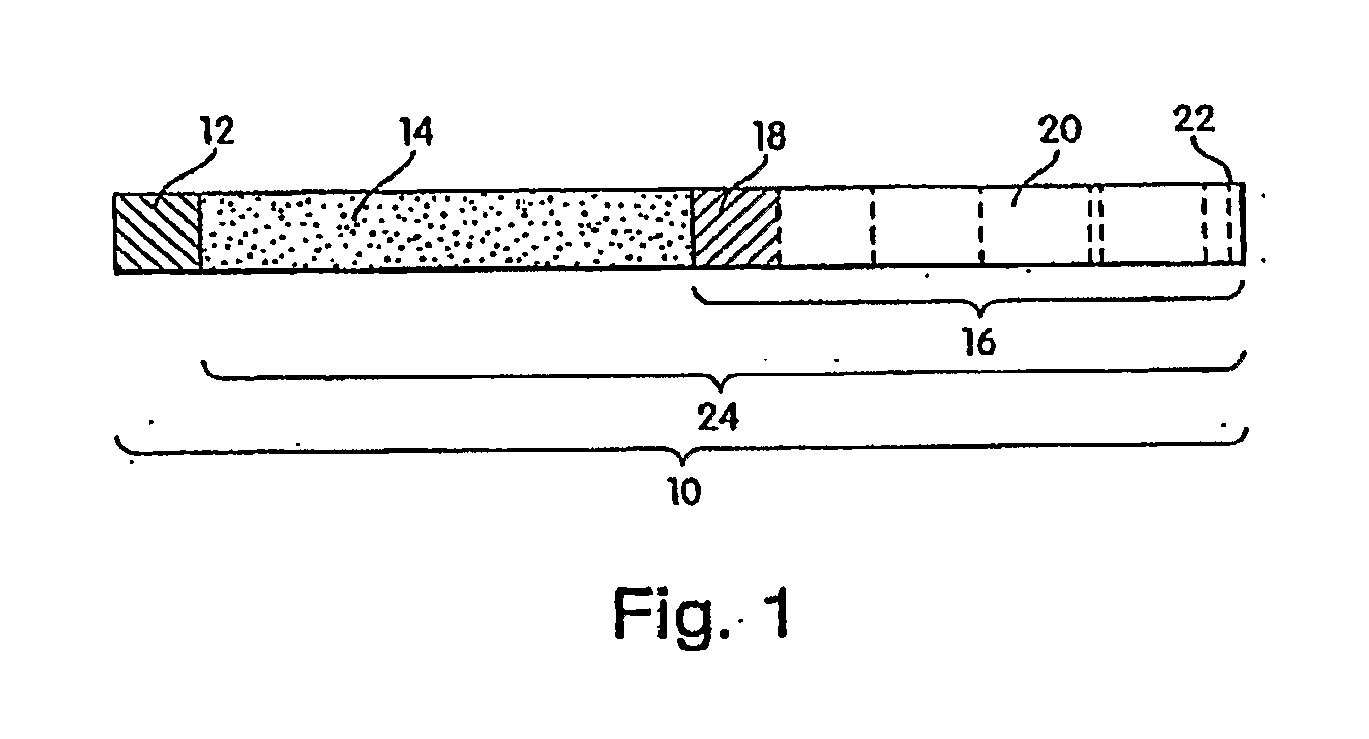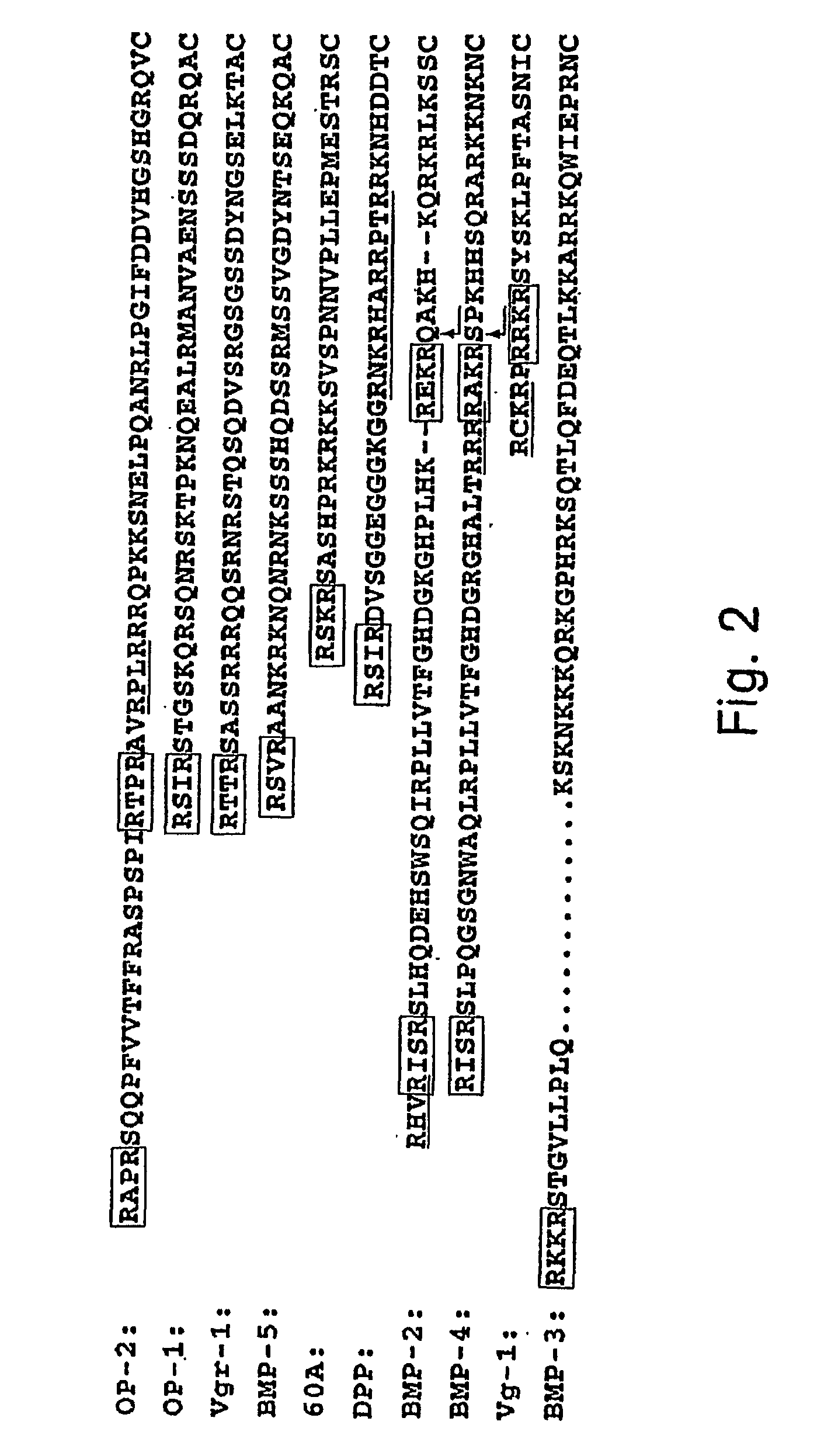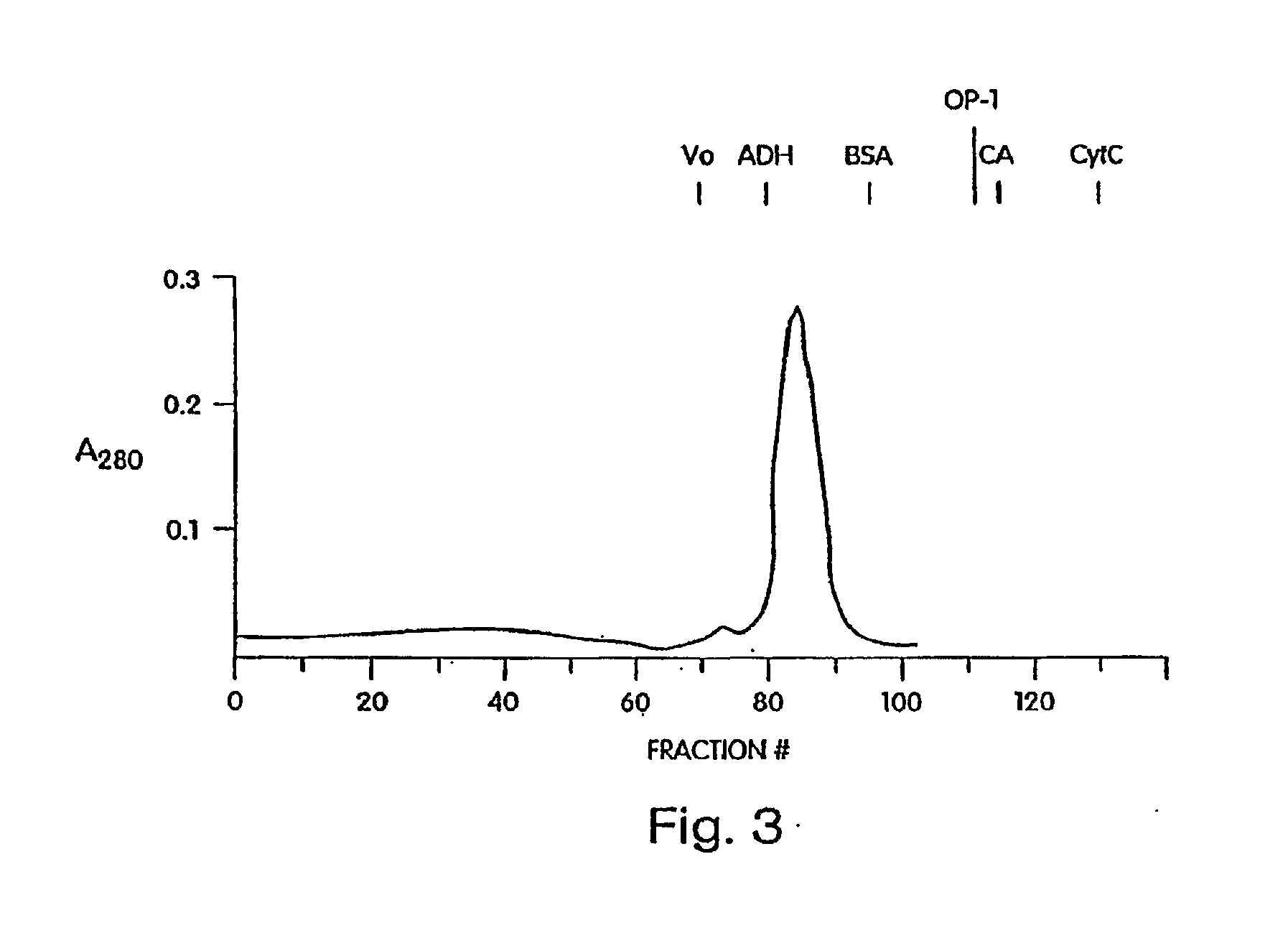Methods of treating cartilage defects using a soluble morphogenic protein complex
a morphogenic protein and cartilage technology, applied in the field of orthopaedic tissue repair, can solve the problems of cartilage repair and regeneration, pain and stiffness, replacement of the entire joint,
- Summary
- Abstract
- Description
- Claims
- Application Information
AI Technical Summary
Benefits of technology
Problems solved by technology
Method used
Image
Examples
example 1
Dog Model Repair of Osteochondral Defects
[0161]12 adult male bred for purpose dogs will undergo surgery. Both hindlimbs will be prepped and draped in sterile fashion. A medial parapatellar incision approximately four centimeters in length will be made. The patella will be retracted laterally to expose the femoral condyle. In the right medial condyle, a 5.0 mm diameter defect extending through the cartilage layer and penetrating the subchondral bone to a depth of 6 mm will be created in the central load bearing region of the femoral condyle with a specially designed or modified 5.0 mm drill bit. The animals will be divided into two groups of 6 animals each. In the first group, after copious irrigation with saline to remove debris and spilled marrow cells, the appropriate time release soluble OP-1 complex will be applied to the synovial fluid surrounding the defect. In the first group of 6 animals, the right defects will receive the time release soluble OP-1 complex. The left limb of ...
example 2
Sheep Model of Regeneration of Chondral Defects by Intra-Articular Administration of OP-1 in Time-Release Microspheres
[0168]18 adult bred for purpose sheep will undergo surgery. With a specially designed instrument, a 10 mm chondral defect will be created in the left hindlimb knee of 18 sheep on the weight bearing condyle surface, 2 mm deep up to the calcified layer (exposition of blood will be pronounced as a failure). The right knees of all animals will remain untouched to serve as a control.
[0169]Group 1 (6 animals): At postoperative day 3, the left knee of each animal will receive an intra-articular injection of a 2501 μl suspension containing 57 mg of control 0.3% microspheres without soluble OP-1 complex.
[0170]Group 2 (6 animals): At postoperative day 3, the left knee of each animal will receive an intra-articular injection of a 250 μl suspension containing 57 mg of 0.3% microspheres containing 170 μg of soluble OP-1 complex.
[0171]Group 3 (6 animals): At postoperative day 3 an...
example 3
Sheep Model for Prevention of Osteoarthritis
[0174]Sheep are used as a model for osteoarthritis because it has been demonstrated that progressive osteoarthritis occurs in these animals after a single injury impact. Twelve adult female crossbred sheep that are acclimatized for 14 days will be used in this study. All sheep will receive general anesthesia and using aseptic techniques, a 3 cm arthrotomy will be used to allow access to both femorotibial joints. A spring loaded mechanical device will be used to create bilateral impact injuries to the weight bearing region of the median femoral condyle (30 Mpa, 6 mm diameter×2) (see FIG. 4). After a routine closure of these incisions, the sheep will receive an intra-articular injection in each knee of soluble OP-1 complex in a vehicle or vehicle alone. Two experimental groups (N=6) will be used. Group A will received 0.3 ml of soluble OP-1 complex intra-articularly in one knee at the time of surgery (day 0) and one week later (day 7). Day 0...
PUM
| Property | Measurement | Unit |
|---|---|---|
| Fraction | aaaaa | aaaaa |
| Volume | aaaaa | aaaaa |
| Fraction | aaaaa | aaaaa |
Abstract
Description
Claims
Application Information
 Login to View More
Login to View More - R&D
- Intellectual Property
- Life Sciences
- Materials
- Tech Scout
- Unparalleled Data Quality
- Higher Quality Content
- 60% Fewer Hallucinations
Browse by: Latest US Patents, China's latest patents, Technical Efficacy Thesaurus, Application Domain, Technology Topic, Popular Technical Reports.
© 2025 PatSnap. All rights reserved.Legal|Privacy policy|Modern Slavery Act Transparency Statement|Sitemap|About US| Contact US: help@patsnap.com



